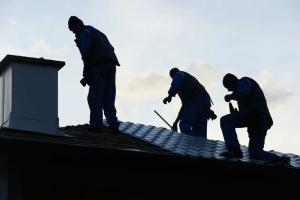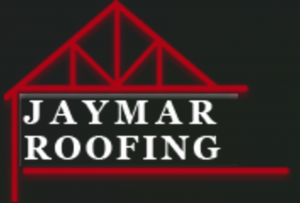Steps to Take After Storm-Related Roof Damage
According to Jules Albert III, owner of Jaymar Roofing in Slidell, Louisiana, the first step after any storm should be to visually inspect the property from a safe distance. “Missing shingles, scattered roofing material, and fallen tree limbs are often obvious indicators,” said Albert. “However, even subtle damage—like lifted flashing or granule loss—can lead to long-term issues if ignored.”
Homeowners and property managers are advised to document visible damage immediately. Clear photographs of displaced shingles, water stains, sagging sections, or punctures from tree limbs provide valuable evidence for insurance claims and future repair planning. If safe access is not possible, a professional roofing contractor can conduct a more thorough inspection using industry tools and safety equipment.
One of the key risks following roof damage is water intrusion. Even a small opening in the roofing system can allow moisture to seep into the attic or walls, leading to mold growth, compromised insulation, and rotting support structures. In some cases, signs of damage may not appear until long after the storm, particularly in cases involving slow leaks or internal condensation. That is why early detection and action are essential.
Temporary measures—such as placing a tarp over the affected area—can prevent immediate water intrusion until repairs can be completed. Roofing professionals typically use reinforced tarps and anchoring systems to prevent additional wind damage. This step should be taken as soon as possible following the storm and can be coordinated with the roofing contractor or insurance adjuster.
Filing an insurance claim is another critical part of the post-storm process. Insurance companies require documentation of damage, timelines of events, and often an inspection by an approved adjuster. Working with a licensed roofing contractor can streamline the claim process, ensuring that all necessary reports and estimates are professionally documented and submitted.
Not all damage is immediately visible from the ground. In many cases, storm impact weakens roof structures that appear intact. Shingles may loosen without detaching fully. Flashing may bend, causing slow leaks. Gutters can shift, changing water drainage patterns and leading to pooling. A full roof inspection by a licensed contractor is the most reliable way to determine the scope of necessary repairs.
Jules Albert III notes that licensed contractors in Louisiana are familiar with the types of storms that affect the region and the common damage patterns that result. “Local experience matters,” Albert stated. “Wind shear from hurricanes, debris from pine-heavy lots, and prolonged rainfall all require a roofing strategy that addresses both surface repair and structural assessment.”
In addition to emergency repair work, long-term solutions may involve replacing underlayment, installing improved drainage components, or upgrading materials to those rated for higher wind resistance. Many property owners choose to make proactive improvements during repair work to avoid recurring problems in future storms.
Another important consideration is permitting and code compliance. Storm damage repairs may trigger local inspections or require updated permits—especially in flood-prone or hurricane-risk areas. Working with a contractor familiar with local codes ensures that repairs are not only effective but legally compliant. This reduces the risk of fines or complications during property resale.
In Slidell and surrounding areas, storm recovery efforts often involve coordination with multiple service providers—roofers, insurance adjusters, tree removal crews, and restoration companies. Having a clear action plan can reduce confusion and help ensure that each step of the process supports the next.
Key actions following roof damage include:
Documenting visible damage with time-stamped photos.
Avoiding unsafe access to the roof without proper equipment.
Contacting a licensed roofing contractor for inspection.
Filing an insurance claim with detailed evidence.
Implementing temporary protection such as tarping.
Scheduling repairs based on inspection results and code requirements.
Keeping records of all communications, estimates, and receipts.
Roof damage may not always be dramatic or immediately dangerous, but even moderate impact can create long-term vulnerabilities. Moisture intrusion, pest access, and energy inefficiency are all potential consequences of untreated roof issues. In storm-prone regions like Southeast Louisiana, quick response and professional evaluation make the difference between minor repairs and major reconstruction.
Morgan Thomas
Rhino Digital, LLC
+1 504-875-5036
email us here
Visit us on social media:
Facebook
Legal Disclaimer:
EIN Presswire provides this news content "as is" without warranty of any kind. We do not accept any responsibility or liability for the accuracy, content, images, videos, licenses, completeness, legality, or reliability of the information contained in this article. If you have any complaints or copyright issues related to this article, kindly contact the author above.
The Global Digital Manufacturing Market: A Comprehensive Analysis of Trends and Growth Drivers
Automotive Aftermarket Estimated to Reach Market Value of USD 620 Billion by 2035 | Valeo, Continental AG
Automotive E-Commerce Market to Hit USD 199.5 Billion by 2032, Redefining Vehicle Sales and Parts Distribution
Więcej ważnych informacji
 Jedynka Newserii
Jedynka Newserii

 Jedynka Newserii
Jedynka Newserii

Konsument

Polacy nie korzystają z hossy trwającej na warszawskiej giełdzie. Na wzrostach zarabiają głównie inwestorzy zagraniczni
Od października 2022 roku na rynkach akcji trwa hossa, nie omija ona także warszawskiej giełdy. Mimo to inwestorzy indywidualni odpowiadają zaledwie za kilkanaście procent inwestycji, a o wzrostach decyduje i na nich zarabia głównie kapitał z zagranicy. Widać to również po napływach i odpływach do i z funduszy inwestycyjnych. Zdaniem Tomasza Koraba, prezesa EQUES Investment TFI, do przekonania Polaków do inwestowania na rodzimej giełdzie potrzeba zysków z akcji, informacji o tych zyskach docierającej do konsumentów oraz czasu.
Polityka
Obowiązek zapełniania magazynów gazu w UE przed sezonem zimowym ma zapewnić bezpieczeństwo dostaw. Wpłynie też na stabilizację cen

Unia Europejska przedłuży przepisy z 2022 roku dotyczące magazynowania gazu. Będą one obowiązywać do końca 2027 roku. Zobowiązują one państwa członkowskie do osiągnięcia określonego poziomu zapełnienia magazynów gazu przed sezonem zimowym. Magazyny gazu pokrywają 30 proc. zapotrzebowania Unii Europejskiej na niego w miesiącach zimowych. Nowe unijne przepisy mają zapewnić stabilne i przystępne cenowo dostawy.
Infrastruktura
Gminy zwlekają z uchwaleniem planów ogólnych zagospodarowania przestrzennego. Może to spowodować przesunięcie terminu ich wejścia w życie

Reforma systemu planowania i zagospodarowania przestrzennego rozpoczęła się we wrześniu 2023 roku wraz z wejściem w życie większości przepisów nowelizacji ustawy z 27 marca 2003 roku. Uwzględniono w niej plany ogólne gminy (POG) – nowe dokumenty planistyczne, za których przygotowanie mają odpowiadać samorządy. Rada Ministrów w kwietniu br. uchwaliła jednak ustawę o zmianie ustawy z 7 lipca 2023 roku, a jej celem jest zmiana terminu obowiązywania studiów uwarunkowań i kierunków zagospodarowania przestrzennego gmin na 30 czerwca 2026 roku. Wskazana data może nie być ostateczna z uwagi na to, że żadna z gmin nie uchwaliła jeszcze POG.
Partner serwisu
Szkolenia

Akademia Newserii
Akademia Newserii to projekt, w ramach którego najlepsi polscy dziennikarze biznesowi, giełdowi oraz lifestylowi, a także szkoleniowcy z wieloletnim doświadczeniem dzielą się swoją wiedzą nt. pracy z mediami.










.gif)

 |
| |
| |
|